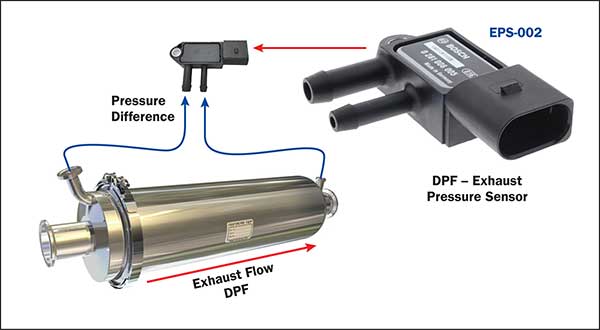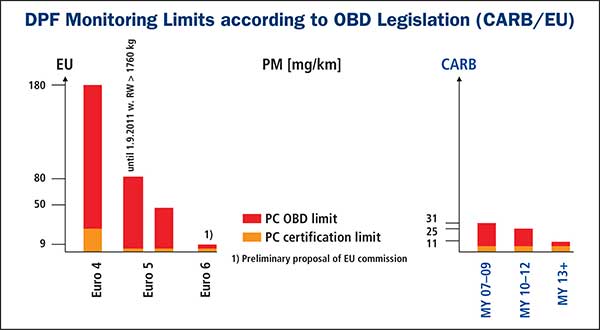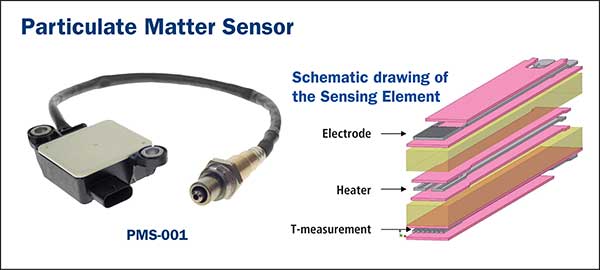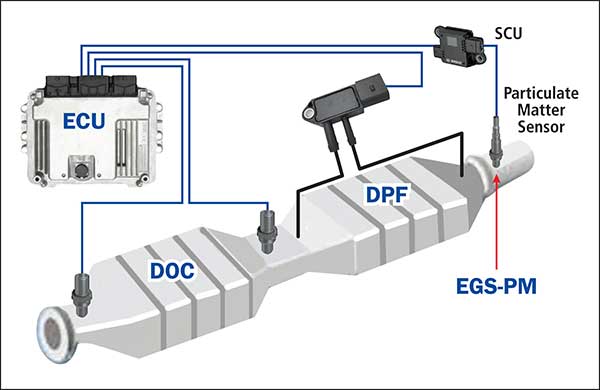Latest News
Particulate Matter Sensors (PMS)
What technicians need to know about the increased use of Particulate Matter Sensors (PMS) now utilised on increasing numbers of Diesel-powered vehicles.
Currently, for Diesel powered vehicles to meet Emission Legislation Standards in Europe and USA, they are generally fitted with an exhaust trap/filter for Particulate Matter. (DPF – Diesel Particulate Filter). Monitoring the levels of restriction in the DPF can be provided by evaluating the pressure difference across the filter by the "DPF - Exhaust Pressure Sensor" as required by in-use monitoring (OBD), to ensure the efficiency of a functioning DPF through a regeneration process.

Particulate Matter Sensor (PMS)
With the continuing tightening of emission regulations for Diesel engines, a more direct measurement of particulate matter is required that provides sufficient accuracy and sensitivity with the structure necessary for stable long-life operation, whilst dealing with exhaust gas conditions.
Life Span – 250,000km Max Exhaust Temperature 850 Deg C
The particulate matter sensor can assist in:
- The estimation of the amount (Mass) of soot accumulation in the DPF for a more accurate DPF Regeneration strategy.
- DPF failure detection process which may result in excess PM emissions, to log an OBD fault signal.

The Bosch ceramic Exhaust Gas Sensor for Particulate Matter (EGS-PM)

Simplified basic operation of accumulative electrode type PMS:
- A DC voltage is applied to 2 inner – digital electrodes on the sensing surface.
- As soot particles from the exhaust are deposited during engine running condition, the characteristic drop of resistance due to the build-up of “electrically conductive soot particle paths” can be used to determine soot emissions. (Based on the varying resistance measurement)
- Prior to each measurement phase, an integrated heater and temperature sensor allow for controlled regeneration of the sensing element” (Removal of soot through oxidation) by heating.
Note: Other sensing technologies may be utilised to achieve a similar result.
Typically
- Electrical charging sensor
- Radio Frequency (RF) sensor
Location of PMS:
The particulate matter sensor is generally installed downstream of the DPF and combined with an Adapted sensor control unit (SCU).

Testing the PMS system requires a suitable scanner, but it is essential that the Diesel Particulate Filter Is in a functioning condition.
The Premier Auto Trade Sensor range includes Particulate Matter Sensors (PMS) from the world’s leading manufacturers, covering almost 64,000 vehicle applications in Australia and NZ.
When you supply and fit products from Premier Auto Trade you can expect a product designed and tested to the vehicle manufacturer’s specifications offering OE form, fit and function. Premier Auto Trade distributes products throughout Australia via a network of specialised resellers and leading automotive groups. |



